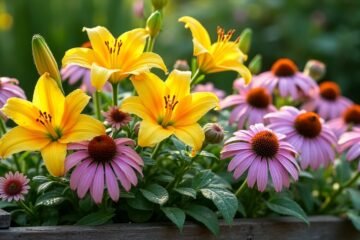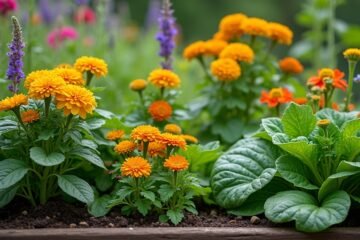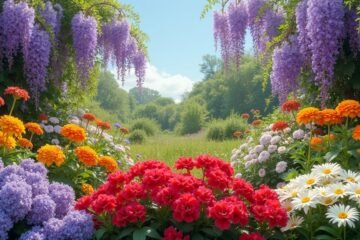Want to turn your garden into a pollinator paradise? Start by choosing native plants like coneflowers and black-eyed Susans for easy, delightful blooms! Mix in different flower shapes and vibrant colors—think sunflowers and foxgloves—to attract all sorts of buzzing buddies. Don’t forget to create cozy habitats like bee hotels, and skip the pesticides—they’re no party for our pollinating pals! Finally, add a charming bird bath; even pollinators love a rejuvenating sip! Curious for more tips?
Choose Native Plants
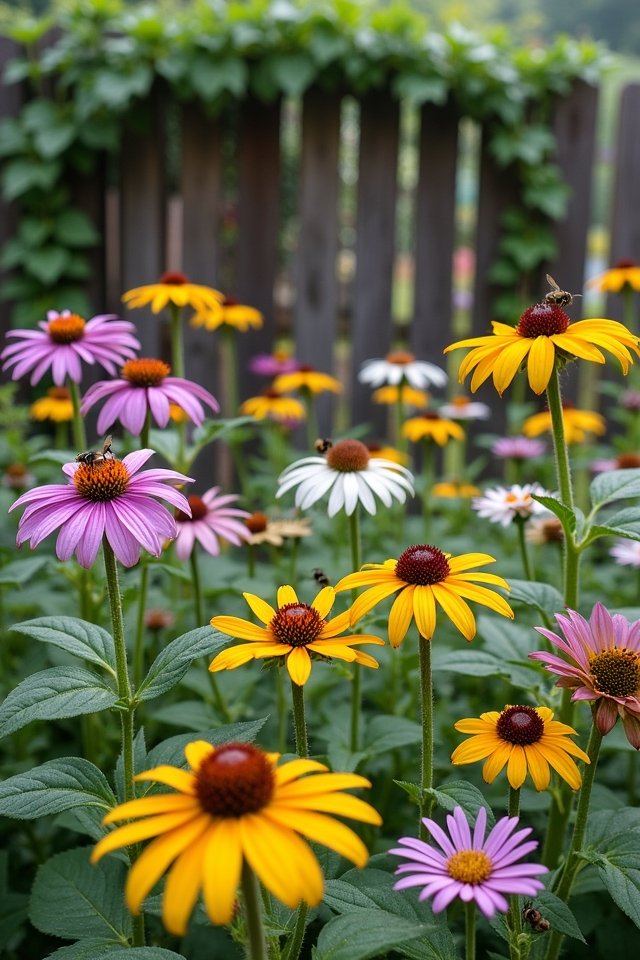
When it comes to attracting pollinators to your garden, native plants are like VIP invitations to a buzzing party! You’ll want to pay attention to your plant selection—choose local flora that thrives in your area! Think of coneflowers and black-eyed Susans—they’re like nature’s candy store for bees and butterflies. Plus, consider bloom timing! Plant your favorites in staggered seasons, so there’s always something delicious for pollinators to sip on. A well-timed bloom schedule is like playing matchmaker for garden life! Imagine a kaleidoscope of colors appealing to all the little creatures. With native plants, you create an ecosystem that supports biodiversity, encourages pollination, and makes your garden a vibrant, lively haven. Who wouldn’t want that?
Provide a Variety of Flower Shapes and Colors
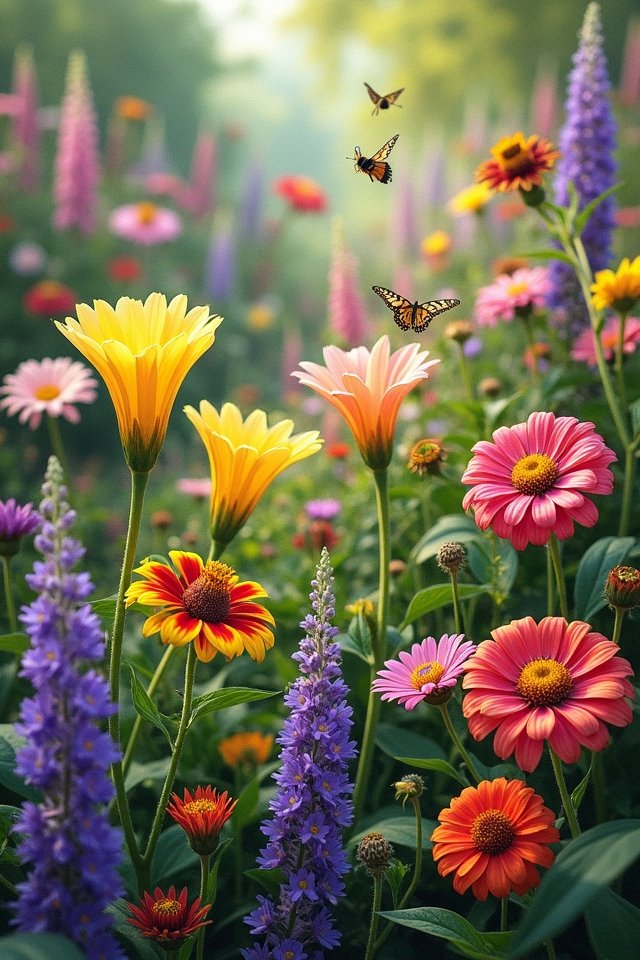
In your quest to create a pollinator paradise, remember that variety is the spice of life! Picture a garden splashed with colors and shapes that dance in the breeze. Opt for dainty daisies, bold sunflowers, and enchanting foxgloves—they each attract different pollinators. But don’t just stop at visuals! Add some delightful flower fragrance, like sweet lilacs or zesty citrus blooms, to pull them in. Also, think seasonal blooms—planting early spring crocuses as well as late-summer asters guarantees there’s always something in bloom! Imagine bees buzzing, butterflies flitting, and hummingbirds zipping by, all enjoying your floral buffet. They’ll flock to your garden like kids to candy! Variety not only brings beauty but also strengthens your garden’s pollinator allure—what’s not to love?
Create Habitats for Pollinators
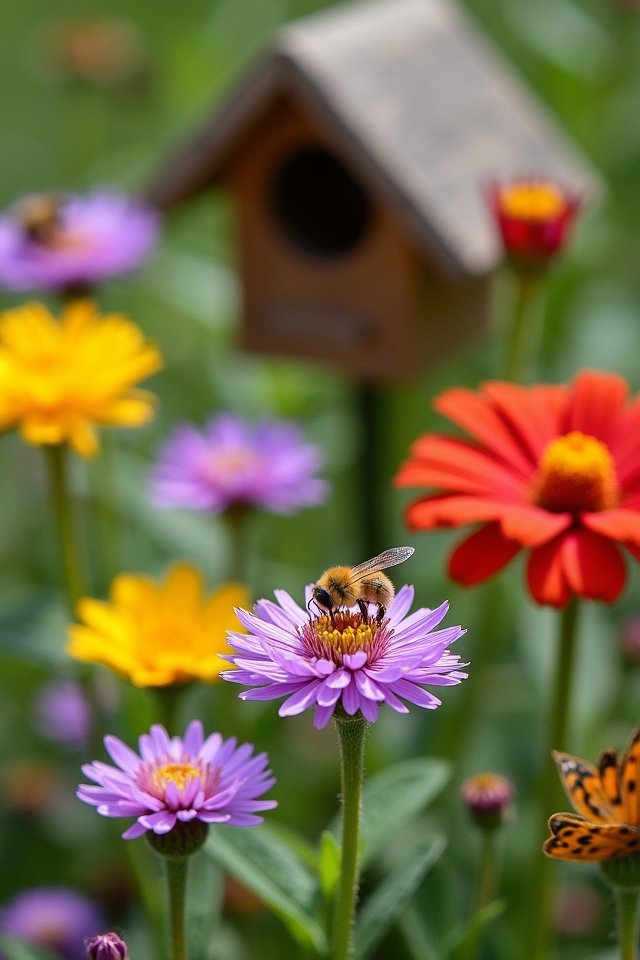
Creating cozy habitats for pollinators is like setting up a five-star hotel in your backyard! Think about adding bee hotels—those chic little lodgings provide safe spaces for solitary bees. Just imagine them buzzing around, happy as can be! Don’t stop there, sprinkle natural mulch around your garden. It not only keeps the soil cozy but creates the perfect hideaway for ground-nesting bees. You can even create a patch of wildflowers, offering delicious nectar. A tiny pond or a shallow dish of water adds a splash of relaxation! By curating these habitats, you’re inviting pollinators to thrive right outside your window. So, roll up your sleeves and let the magic unfold—transform your garden into a buzzing paradise!
Avoid Pesticides
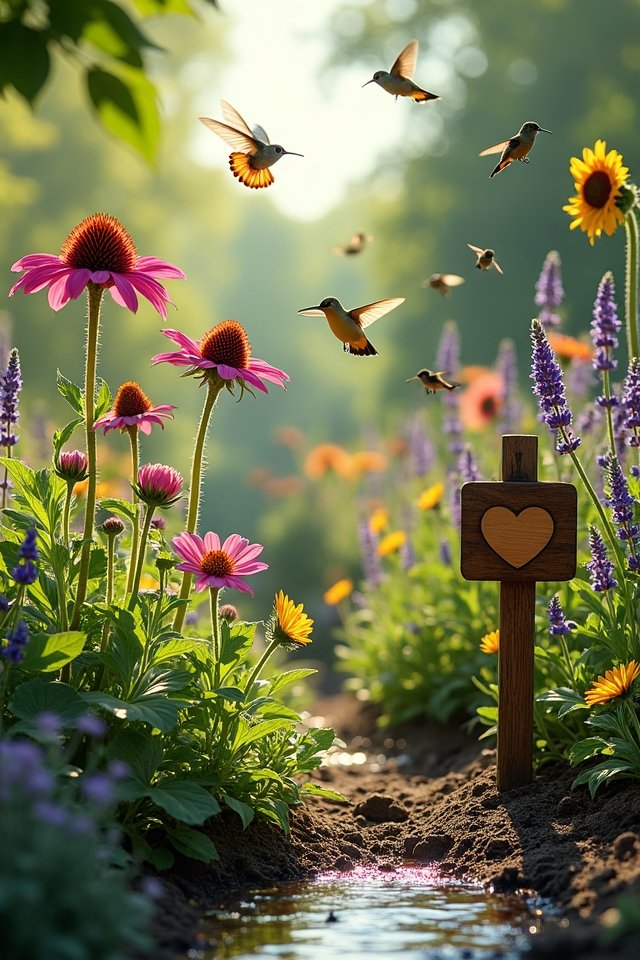
While it might seem tempting to grab that chemical spray to banish pests, avoiding pesticides is like throwing a lifeline to your pollinators! Instead of relying on those harmful products, adopt innovative pesticide alternatives that support organic gardening. Imagine using neem oil or insecticidal soap—gentle enough for the environment yet tough on pests. You could also boost your garden’s defenses with companion planting; marigolds can ward off aphids while inviting cheerful bees! By creating a vibrant ecosystem, you’re not just saying “no” to pesticides; you’re inviting nature’s helpers to dance among your blossoms. Plus, your garden will sparkle with life and color, making it a delightful sanctuary for both you and your buzzing friends! Isn’t that worth celebrating?
Offer Water Sources
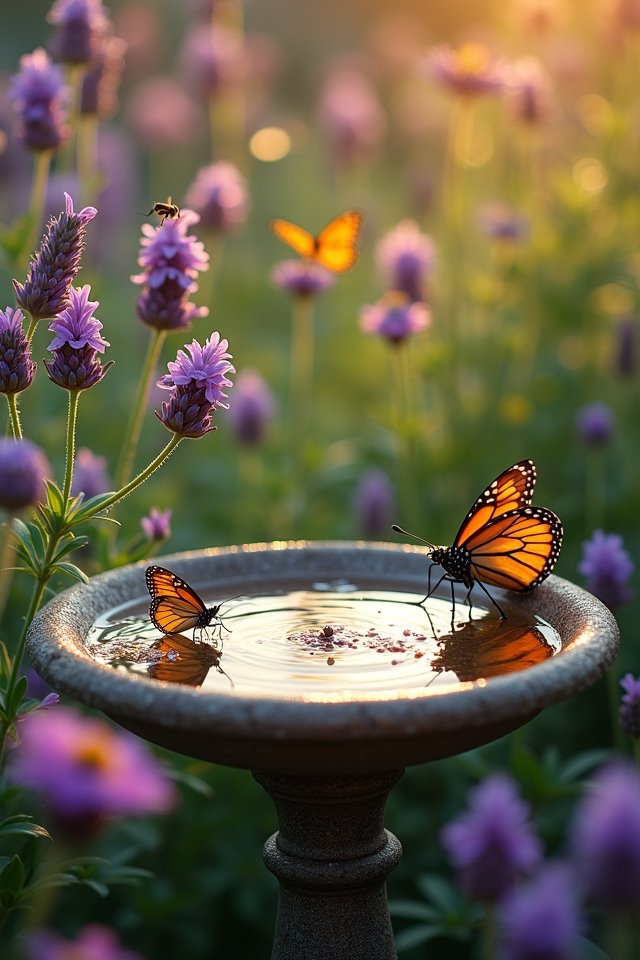
Your garden space isn’t just a feast for the eyes—it’s a haven for thirsty pollinators, too! To keep these little helpers buzzing around, you’ll want to offer them invigorating water sources. Think of vibrant bird baths, shimmering under the sun, as a mini oasis!
Place shallow dishes filled with water throughout your garden; they don’t need to be fancy. Toss in some pebbles for those tiny critters to perch on, making it easy for them to sip without taking a swim. You’ll be amazed at how quickly bees and butterflies flock to these delightful spots! Isn’t it heartwarming to watch them hydrate and flourish? So, grab that dish and get creative—your pollinators will thank you!
Frequently Asked Questions
What Is the Best Time to Plant Pollinator-Friendly Flowers?
The best time to plant pollinator-friendly flowers largely depends on your local climate. Generally, spring is ideal, as those vibrant seasonal bloomers spring to life! Just picture your garden bursting with color! You can also target fall for planting perennials that’ll wake up next season. Who doesn’t love a dazzling pollinator buffet? So, grab your shovel and get ready to delight the bees and butterflies with your innovative floral masterpiece!
How Can I Identify Local Pollinator Species in My Area?
Imagine stepping into a vibrant world where butterflies dance like confetti in the breeze! To identify local pollinator species, start with local bee identification guides—these handy tools show you the buzzing heroes in your neighborhood. Grab a butterfly species guide, too! You’ll spot lovely Monarchs and tiny Skippers flitting around. Snap pictures and take notes; you’re becoming a nature detective! Isn’t it exciting to uncover who shares your garden? Happy exploring!
Are There Specific Colors That Attract More Pollinators?
You’ve probably noticed how certain colors make flowers pop! Bright hues like yellow, blue, and purple sure know how to grab a pollinator’s attention. It’s almost like they’re waving a flag saying, “Come over here!” Plus, don’t forget about flower shapes; tubular varieties attract hummingbirds, while flat blooms welcome bees. Isn’t nature clever? Immerse yourself in a rainbow of blooms and watch your garden thrive with buzzing energy! Who knew colors could be so powerful?
Can I Use Companion Planting to Support Pollinators?
Companion planting can be a game-changer for your garden’s pollinators. Imagine colorful flowers blossoming next to your veggies, inviting beneficial insects like bees and butterflies! Pairing marigolds with tomatoes creates a vibrant symphony of life. These flowers not only look fantastic, but they also lure in pollinators, boosting your yields in the process! So, why not sprinkle some delightful companion plants around and watch your garden dance with life? Isn’t that exciting?
How Long Does It Take for Pollinators to Find My Garden?
How long does it take for pollinators to find your garden? Well, it’s like waiting for a pizza delivery—exciting yet uncertain! Depending on your garden maintenance, it can take days to weeks. Pollinator behavior is influenced by their natural rhythms, so creating inviting blooms will speed things up! Imagine vibrant flowers dancing in the breeze, attracting bees and butterflies. Be patient, stay curious, and watch as your garden buzzes with life! Isn’t nature fascinating?
